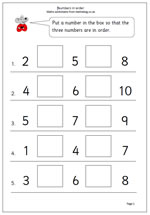 I have just published a new worksheet on writing small numbers in order, for year 1 although suitable for younger children if ready. There is more than one possible answer on most of these which makes it a little trickier.
I have just published a new worksheet on writing small numbers in order, for year 1 although suitable for younger children if ready. There is more than one possible answer on most of these which makes it a little trickier.
Many children learn to recite the numbers 1 to 10 without having any concept of what each number means so it is very important to show these numbers using practical ‘hands on’ equipment such as cubes, counters etc. and to understand one-to-one correspondence. To begin with some children will need to count up in ones from 1 to find each answer
There are also many activities which can help, such as tracing numbers in sand, tracing over numbers or using number cards to rearrange a small set of numbers in order.
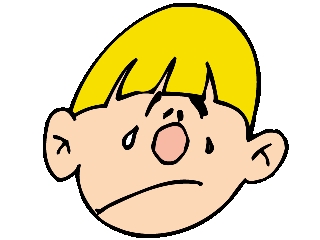
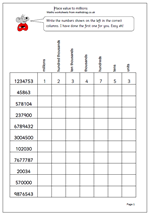
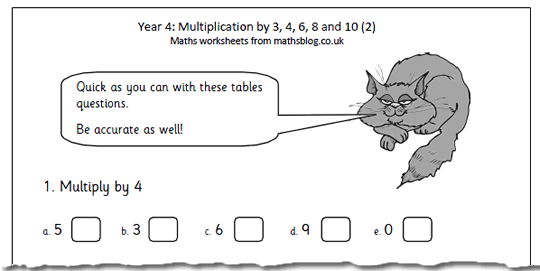
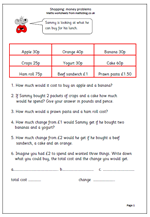
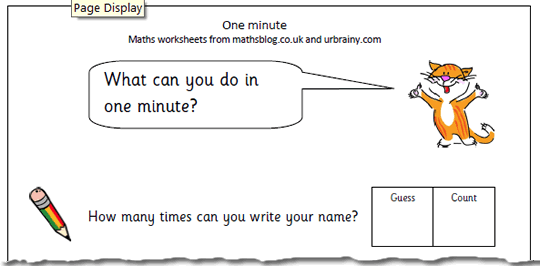
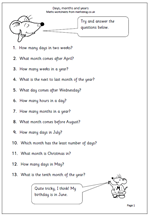
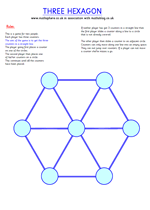
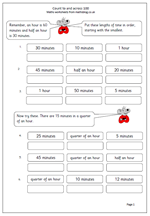
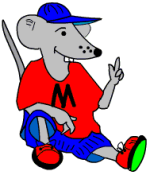 Below are two pages of maths problems written in words. They are known as ‘single step operations’ as only one mathematical process is necessary to solve them. Children find word problems very difficult, but the one step type are much, much easier than the two step.
Below are two pages of maths problems written in words. They are known as ‘single step operations’ as only one mathematical process is necessary to solve them. Children find word problems very difficult, but the one step type are much, much easier than the two step. Children need to be able to read and understand problems written in prose that include elements of real life, either at home or at school. They need to be able to see what processes are necessary to solve it and then lay out their answer clearly, giving some explanation. If they have had plenty of practice at writing their own number stories in earlier years they will now find these much easier.
Children need to be able to read and understand problems written in prose that include elements of real life, either at home or at school. They need to be able to see what processes are necessary to solve it and then lay out their answer clearly, giving some explanation. If they have had plenty of practice at writing their own number stories in earlier years they will now find these much easier.